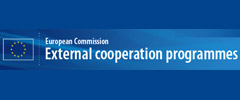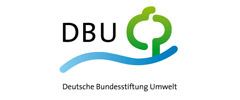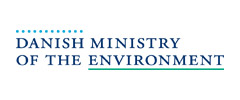NGO launches EU-funded project on EDCs
Parents, entrepreneurs and policy makers targeted
20.02.2014 | Carmen Paun, Chemical Watch
The NGO Women in Europe for a Common Future (WECF) has launched a project funded by the European Commission’s programme Life+ with the goal of protecting children from endocrine disrupting chemicals (EDCs).
Called ChildProtect, the project is targeting parents in the Netherlands and Belgium, and social entrepreneurs and policy makers across Europe, in an effort to raise awareness on the issue among citizens, increase voluntary substitution of EDCs by businesses, and pressure policy makers to adopt measures against the chemicals.
“There is an overwhelming amount of research which shows that we should be worried,” said Sascha Gabizon, WECF international director, speaking at the launch event of the project yesterday in Brussels. Helping parents protect their children from the EDCs present in everyday products is very difficult, “because there is hardly any labelling on it,” Mrs Gabizon said.
Dr ten Tusscher, consulting paediatrician at Westfries Gasthuis Hoorn hospital in the Netherlands, noted that there are safer alternatives in the medical environment for almost every product containing DEHP. “Many hospitals have gradually reduced exposure to PVC- and DEHP-containing products; purchasing of products initially is likely more expensive if you choose DEHP free,” he said. But with more hospitals ordering DEHP-free products together, the costs can go down significantly, he added.
“From a regulatory point of view, there should be zero tolerance for chemicals known to disrupt development and the endocrine system,” said Dr Janna G Koppe, professor of neonatology at the University of Amsterdam.
Her statement comes at a time when the European Commission is expected to release more information on the process to identify criteria for EDCs that should be included in the EU’s laws on biocides, cosmetics, pesticides and in REACH. The criteria were expected last year, but the process has been delayed.
“There is no generally-accepted system to identify EDCs,” said Martin Seychell, deputy director general for consumers and health and the European Commission’s DG Sanco, who also spoke at the ChildProtect launch event in Brussels. According to him, identifying the right EDC criteria is not “a one-off exercise”, but rather “a standard approach for evaluating the toxicity of substances”. Moreover, the European Commission needs to make sure that the criteria it comes up with can be routinely and consistently applied, he said. “Legislation is important, but implementation of legislation is [what] protects people,” Mr Seychell added.
Responding to criticism on the EDC criteria delays, and on the decision of the European Commission to carry out an impact assessment before presenting the criteria, Mr Seychell said that this was standard procedure to inform policy makers in their decisions. “The adoption of any legislative act is a political decision,” he added.
Mr Seychell also denied claims that economic reasons were underpinning the impact assessment on EDC criteria. “An impact assessment is not only economic, but also covers health, environment, social,” he said, noting that the assessment is meant to make decision makers aware of any negative impacts any specific action on EDC criteria may have in any other area. “Should we take the decision without at least knowing what kind of impact the ban on specific substances [in pesticides] would have on things like food and feed prices, for example?” Mr Seychell asked.
A consultation to gather information and evidence that could feed into the impact assessment will be launched soon, he said, without giving a specific timeline. He noted however that the preparations for the public consultation were in the final stages at the European Commission.
The institution’s overall strategy on EDC action, which was first published in 1999, is also being revised this year and it will be published in the second part of 2014, according to Peter Korytar, policy officer at the Commission’s DG Environment.
“We hope that the strategy will set the framework for reducing the exposure of the public as a matter of urgency and we want to see in that strategy a specific timetable of all the relevant legislation and potentially new legislation to address the EDCs,” said Genon Jensen, director of the NGO Health and Environment Alliance (HEAL) at the event.
Carmen Paun
Related News
WECF co-organising partner Green Pharmacy Conference 2017
The environmental cycle of medicines - an incentive for innovation in the human and veterinary medicine chain
21.09.2017
Recycling contaminates plastic children’s toys with toxic chemicals from electronic waste
A new global survey finds that recycling plastics containing toxic flame retardant chemicals found in electronic waste results in contamination of the world’s best-selling toy: The Rubik’s Cube.
20.04.2017
One step towards a safer blood bag
WECF speaker at final Seminar of the LIFE+ project PVC Free Blood Bag, 27-28 September, in Östersund, Sweden
11.10.2016
WECF sends letter to Dutch Secretary of State concerning EU policy on EDCs
In a joint statement WECF and the EDC Free Coalition ask Dutch State Secretary Dijksma to insist on major changes at the Environmental Council meeting to protect our health and environment.
21.06.2016
Commission's EDC criteria proposal: More humans will have to be harmed before action is taken
The European Commission presented today its proposal for criteria to identify endocrine disrupting chemicals (EDCs). WECF and the EDCfree Coalition condemn strongly the decision.
15.06.2016




































